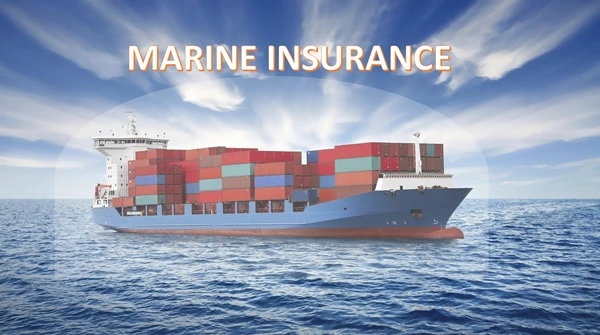When I first explored the world of international trade and shipping—especially seeing containers moving through the ports of Mumbai and Chennai—I realised one thing clearly: the sea, the inland waterways, the trucks that haul goods before and after shipping—all carry serious risks. That’s where “marine insurance” comes in. In India, with our long coastline, large export-import operations and complex logistics, the right marine-insurance policy isn’t just a paperwork formality — it’s a vital layer of protection.
Whether you’re a business sending goods abroad, a ship-owner, or a logistics provider operating inland and overseas, knowing the types of marine insurance available will help you pick what fits your situation and avoid nasty surprises. In this article I’ll walk you through the key categories of marine insurance in India, explain what they cover, and offer tips on choosing wisely. By the end you’ll feel confident in understanding “what kind of marine cover do I need”.
What is Marine Insurance?

In simple terms, marine insurance is a contract between an insured party and an insurer under which the insurer agrees to indemnify the insured for losses or damages to goods, vessels, freight, and associated liabilities that arise from marine transit or associated operations.
In India, marine insurance covers not only sea-going vessels, but also inland transit (within India) and multimodal operations (sea + land).
So whether your business is moving goods across oceans, or simply from warehouse to port by road, there is a marine-insurance policy tailored for you.
Major Types of Marine Insurance in India
Here are the key types, explained in a way that you can pick and choose depending on your role (ship-owner / consignor / consignee / logistics) and your risk-profile.
- Cargo Insurance (or Marine Cargo Insurance)
This is the most common for businesses engaged in export/import. It covers the goods being transported (by sea, air, road or rail) against damage, loss or delay.
Features:
- Covers perils of the sea (storms, shipwrecks), handling (loading/unloading), transit (onshore/offshore) and sometimes theft or pilferage.
- Can be taken for a single shipment (voyage basis) or on an open/floating basis for regular shipments.
- Important for exporters/importers: if your goods get damaged before reaching destination you want protection.
When it’s right for you: If you own or consign goods for shipment, or receive goods from overseas, especially high-value or fragile items.
Tip: Make sure the policy covers transit on land (if your goods travel within India after port) or multimodal if needed. Also check exclusions (e.g., war risk, delay alone may not be covered).
- Hull Insurance (or Hull & Machinery Insurance)
This covers the vessel (ship, barge, tug, etc.) and its machinery, equipment – in other words the “hull” or body of the vessel.
Features:
- Protection against perils like collision, grounding, fire, storms, piracy (as applicable) that damage the ship.
- Applicable to ship-owners/operators or finance houses with interest in the vessel.
When it’s right for you: If you own or charter vessels, or are involved in maritime operations. Without hull cover, damage to your vessel may mean severe financial burden.
Tip: Understand whether the policy is “Total Loss Only” (TLO) or “All Risks” for hull; check machinery cover; check exclusions for pre-existing damage.
- Freight Insurance
Freight means the payment a shipping company or carrier receives for moving goods. Freight insurance protects that income or payment when freight is lost because goods are lost/damaged and hence payment cannot be claimed.
Features:
- Covers the ship-owner/carrier/forwarder’s loss of freight revenue due to cargo being lost/damaged.
- Protects business continuity for logistics players.
When it’s right for you: If you are a carrier/shipping line/freight-forwarder and your earnings depend on goods being transported safely.
Tip: Confirm when the liability shifts (from consignor to carrier) and ensure policy wording matches your business model (single shipment vs fleet).
- Liability Insurance (Protection & Indemnity, or P&I)
This covers legal liability – third-party claims against the insured for injury, death, environmental damage, collision, salvage costs etc.
Features:
- For ship-owners/operators, charterers, terminal operators.
- Covers liabilities such as crew injury, pollution/spill clean-up, cargo damage, wreck removal.
- Almost a must-have given legal exposures and global trade norms.
When it’s right for you: If you own/operate vessels, are involved in chartering, or logistics operations where third-party liability is possible.
Tip: Ensure your policy covers the full risk (crew, pollution, collision) and know whether it is under a “club” or local insurer, what the limits are.
- Inland Marine Insurance / Transit (Within India)
Because trade in India is often multimodal (sea + land), goods get moved domestically as well. Inland marine or domestic transit insurance covers goods while being transported over land/rail/air within India or from warehouse to port, etc.
Features:
- Covers inland transit risks (road, rail) between origin and port, or domestic shipments.
- Important in Indian context where ports are far from manufacturing centres.
When it’s right for you: If you move goods domestically (within India) either between manufacturing site → port, or port → warehouse.
Tip: Check whether policy covers the “last mile” transit, whether warehouse risk is included, whether coverage stops at port or continues inland.
- Mixed/Composite Marine Insurance
For large operations, logistics houses or multimodal operators, there’s a bundled policy combining hull + cargo + liability + freight under one cover.
Features:
- Comprehensive cover across multiple assets and risks.
- Useful when you manage full chain – vessel, cargo, freight & liability.
When it’s right for you: If you’re a large logistics provider, shipping conglomerate, or end-to-end operator.
Tip: These tend to be more complex and costlier; make sure you understand how the different risks are grouped, what sub-limits apply, and how claims are managed across segments.
Why These Types Matter – From My Experience
In my discussions with exporters and shipping businesses in India, I’ve found that many firms treat “marine insurance” as a single generic item. But in reality, the risk profile of a goods exporter is different from a ship-owner, or from a domestic logistics operator. For example, a friend who runs an overseas goods supply business took only cargo insurance. When the inland leg (truck from port to warehouse) got damaged, the cargo insurer denied the claim because the inland leg was excluded. The lesson: if your freight chain is sea + road, choose an inland/sea combined policy.
Similarly, if you charter ships and load goods, you may face liability for damages to vessels or environment, so P&I or liability cover matters for you — not just hull or cargo.
How to Choose the Right Marine Insurance Type for You
Here’s a simple checklist that I recommend to anyone dealing with marine logistics/trade in India:
- Identify your asset & role
- Are you consignor, carrier, ship-owner, forwarder?
- What is the asset: goods (cargo) / vessel / domestic transport / multimodal?
- Map your risk-exposure
- Sea transit, port/unloading, inland movement, chartering, third-party liabilities?
- High-value goods, fragile/ hazardous cargo, long transit, pirate zones?
- Are you in India only, or international?
- Choose the right type of cover
- Cargo insurance if goods.
- Hull if vessel.
- Freight if carrier.
- Liability (P&I) if you face third-party exposures.
- Inland transit/inland marine if domestic part of the chain.
- Mixed/composite if your operations span many risks.
- Check policy form, contract-type & definitions
- Understand whether it’s voyage policy, time policy, open policy (floating), blanket etc.
- Make sure “loss of freight” or “delay cover” are clearly stated if needed.
- Confirm what perils are included/excluded (war, strikes, asbestos, nuclear, etc).
- Check sum-insured, deductibles and premium
- For cargo: value of goods + transport cost + insurance.
- For hull: value of vessel + hull machinery.
- For liability: estimated exposure.
- Premium depends on nature of cargo, route, transit time, vessel age etc.
- Service & claim support
- Does the insurer have experience with maritime claims (often complex)?
- How is loss adjustment handled? Who will assist with surveyors, salvage?
- Is the policy supported by re-insurers that specialise in marine risks?
A Few Personal Tips & Things to Watch Out
- Don’t assume “sea only”: Many policies exclude the inland leg. If your goods go road/rail post-port, check it.
- Voyage vs open/blanket: If you ship regularly, a floating/open policy might save time than separate voyage policies.
- Large value shipments or hazardous cargo: Check for war risks, piracy, delay cover, salvage cover.
- Understand liability exposures: Charters, logistics operators often face huge third-party claims beyond cargo damage.
- Revisit your cover regularly: Vessel age, cargo types, routes change — your marine insurance should evolve too.
- Document well: In the event of a claim you’ll need evidence of cargo condition, packing, loading/unloading, voyage events — good documentation helps.
Conclusion
In the globalised supply-chain environment of India, where goods travel from hinterland to ports, across seas, and through complex logistics networks, marine insurance is not just for big ship-owners — it matters for exporters, importers, freight-forwarders, and domestic logistics operators alike. Understanding the types of marine insurance — cargo, hull, freight, liability, inland transit, composite — helps you pick the right cover for your role and risk-profile.
By paying attention to your assets, your risks, the contract type and insurer services, you can move your goods (or vessel) with much more confidence. Next time you speak to an insurance advisor, you’ll be able to ask smarter questions: “Is this simply cargo cover or does it also include inland transport?”, “Are we covered for delay of freight?”, “Does my vessel have liability cover for environmental damage?” With that clarity, you’re not just buying insurance — you’re buying assurance.




